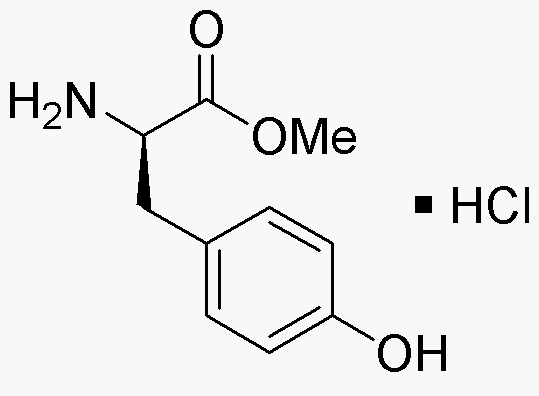D-Tyrosine methyl ester hydrochloride is widely utilized in research focused on:
- Neuroscience Research: This compound is a precursor for neurotransmitters, making it valuable in studies exploring brain function and mental health treatments.
- Pharmaceutical Development: It is used in the synthesis of various pharmaceuticals, particularly those targeting mood disorders and cognitive enhancement.
- Biochemical Studies: Researchers employ it to investigate protein interactions and enzyme activities, aiding in the understanding of metabolic pathways.
- Cosmetic Formulations: Its antioxidant properties make it a popular ingredient in skincare products, promoting skin health and protecting against oxidative stress.
- Food Industry: D-Tyrosine methyl ester hydrochloride is explored as a potential supplement for enhancing flavor profiles and nutritional value in food products.
General Information
Properties
Safety and Regulations
Applications
D-Tyrosine methyl ester hydrochloride is widely utilized in research focused on:
- Neuroscience Research: This compound is a precursor for neurotransmitters, making it valuable in studies exploring brain function and mental health treatments.
- Pharmaceutical Development: It is used in the synthesis of various pharmaceuticals, particularly those targeting mood disorders and cognitive enhancement.
- Biochemical Studies: Researchers employ it to investigate protein interactions and enzyme activities, aiding in the understanding of metabolic pathways.
- Cosmetic Formulations: Its antioxidant properties make it a popular ingredient in skincare products, promoting skin health and protecting against oxidative stress.
- Food Industry: D-Tyrosine methyl ester hydrochloride is explored as a potential supplement for enhancing flavor profiles and nutritional value in food products.
Documents
Safety Data Sheets (SDS)
The SDS provides comprehensive safety information on handling, storage, and disposal of the product.
Product Specification (PS)
The PS provides a comprehensive breakdown of the product’s properties, including chemical composition, physical state, purity, and storage requirements. It also details acceptable quality ranges and the product's intended applications.
Certificates of Analysis (COA)
Search for Certificates of Analysis (COA) by entering the products Lot Number. Lot and Batch Numbers can be found on a product’s label following the words ‘Lot’ or ‘Batch’.
*Catalog Number
*Lot Number
Certificates Of Origin (COO)
This COO confirms the country where the product was manufactured, and also details the materials and components used in it and whether it is derived from natural, synthetic, or other specific sources. This certificate may be required for customs, trade, and regulatory compliance.
*Catalog Number
*Lot Number
Safety Data Sheets (SDS)
The SDS provides comprehensive safety information on handling, storage, and disposal of the product.
DownloadProduct Specification (PS)
The PS provides a comprehensive breakdown of the product’s properties, including chemical composition, physical state, purity, and storage requirements. It also details acceptable quality ranges and the product's intended applications.
DownloadCertificates of Analysis (COA)
Search for Certificates of Analysis (COA) by entering the products Lot Number. Lot and Batch Numbers can be found on a product’s label following the words ‘Lot’ or ‘Batch’.
*Catalog Number
*Lot Number
Certificates Of Origin (COO)
This COO confirms the country where the product was manufactured, and also details the materials and components used in it and whether it is derived from natural, synthetic, or other specific sources. This certificate may be required for customs, trade, and regulatory compliance.


